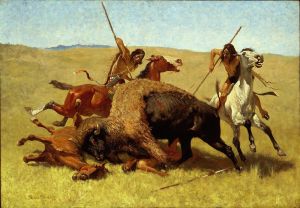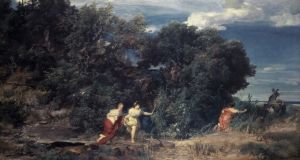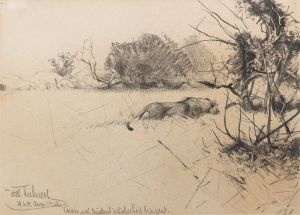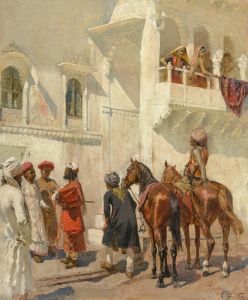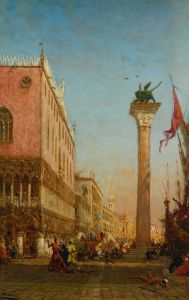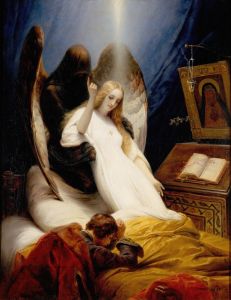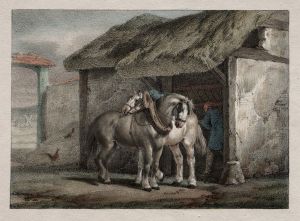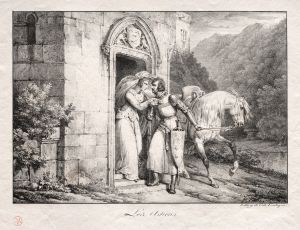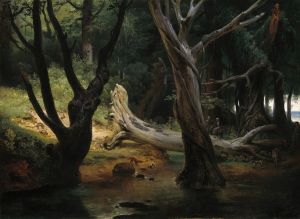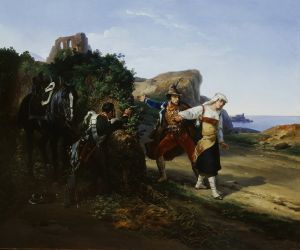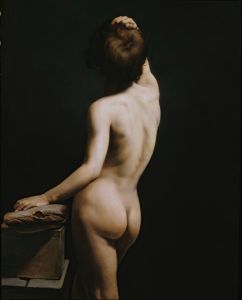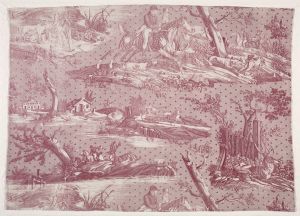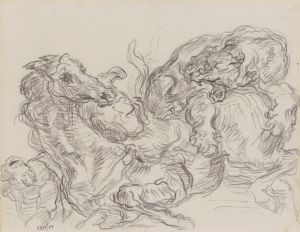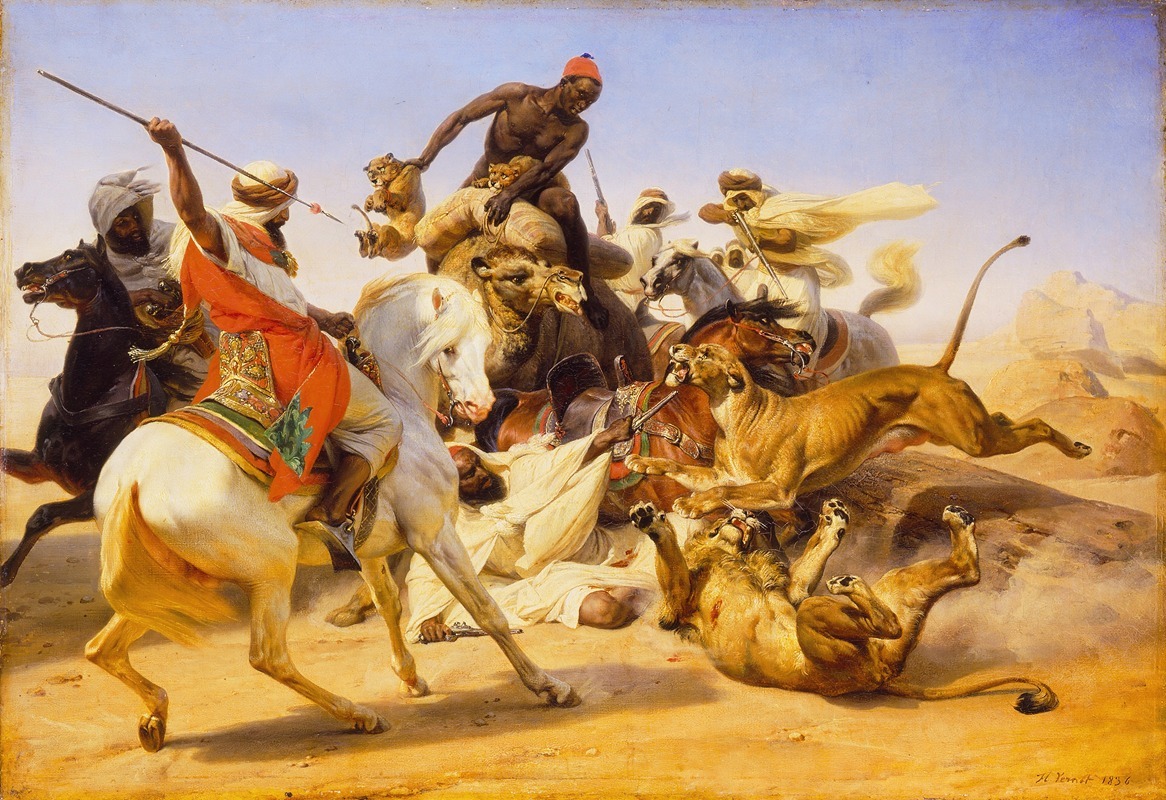
The Lion Hunt
A hand-painted replica of Horace Vernet’s masterpiece The Lion Hunt, meticulously crafted by professional artists to capture the true essence of the original. Each piece is created with museum-quality canvas and rare mineral pigments, carefully painted by experienced artists with delicate brushstrokes and rich, layered colors to perfectly recreate the texture of the original artwork. Unlike machine-printed reproductions, this hand-painted version brings the painting to life, infused with the artist’s emotions and skill in every stroke. Whether for personal collection or home decoration, it instantly elevates the artistic atmosphere of any space.
Horace Vernet's "The Lion Hunt" is a notable painting by the French artist, renowned for his dynamic and vivid depictions of historical and contemporary scenes. Vernet, born in 1789, was a prominent figure in the 19th-century French art scene, known for his ability to capture action and movement, which is evident in "The Lion Hunt."
"The Lion Hunt" was completed in 1836, during a period when Vernet was at the height of his career. This painting is part of a broader genre of Orientalist art, which was popular in Europe during the 19th century. Orientalism in art refers to the depiction of the Middle East and North Africa by Western artists, often characterized by romanticized and exotic portrayals of these regions.
In "The Lion Hunt," Vernet captures a dramatic and intense scene of hunters engaged in a fierce battle with lions. The painting is notable for its dynamic composition and the sense of movement that Vernet masterfully conveys. The scene is filled with tension and energy, as the hunters, mounted on horseback, confront the powerful lions. Vernet's attention to detail is evident in the realistic portrayal of the animals and the expressions of the hunters, which convey a sense of urgency and danger.
Vernet's use of color and light in "The Lion Hunt" enhances the drama of the scene. The contrast between the dark, powerful bodies of the lions and the lighter tones of the hunters' clothing and the landscape creates a striking visual effect. The artist's skillful use of chiaroscuro, the contrast between light and dark, adds depth and dimension to the painting, drawing the viewer's eye to the central action.
"The Lion Hunt" reflects Vernet's interest in exotic and adventurous themes, which was a common trend among artists of his time. This interest was partly fueled by the European fascination with the "Orient" and the desire to explore and depict the unfamiliar and the dramatic. Vernet's travels to North Africa and the Middle East provided him with firsthand experiences and inspiration for his Orientalist works.
Horace Vernet's ability to capture the intensity of the hunt and the ferocity of the lions demonstrates his mastery of the Romantic style, which emphasized emotion, movement, and the sublime aspects of nature. "The Lion Hunt" is a testament to Vernet's skill in creating compelling narratives through his art, and it remains an important example of 19th-century Orientalist painting.
Today, "The Lion Hunt" is appreciated not only for its artistic merit but also as a historical artifact that reflects the cultural attitudes and artistic trends of its time. Vernet's work continues to be studied and admired for its technical excellence and its ability to convey the drama and excitement of the scenes he depicted.





